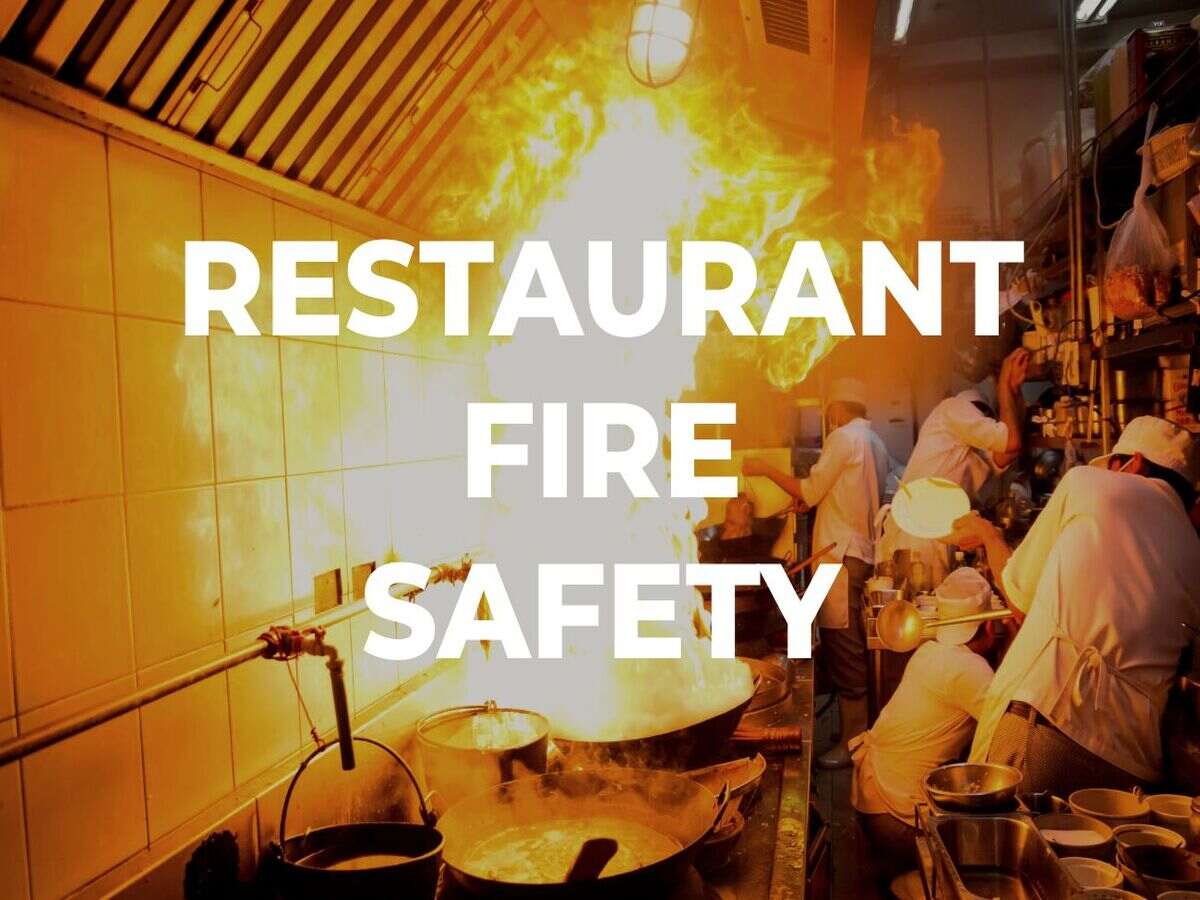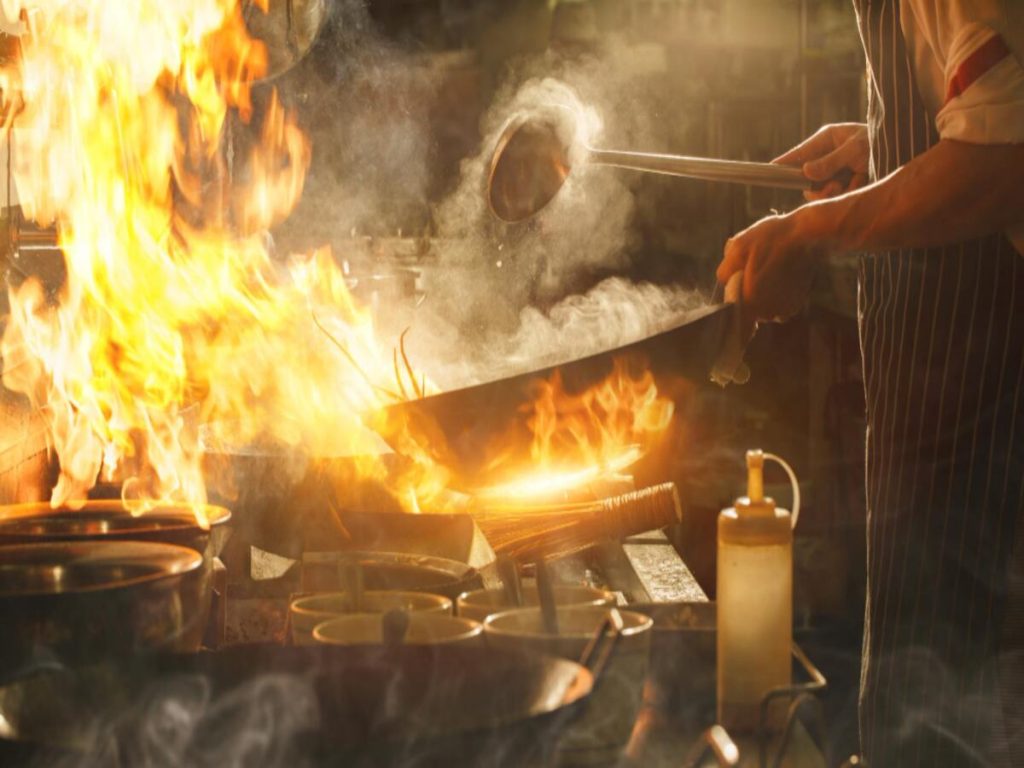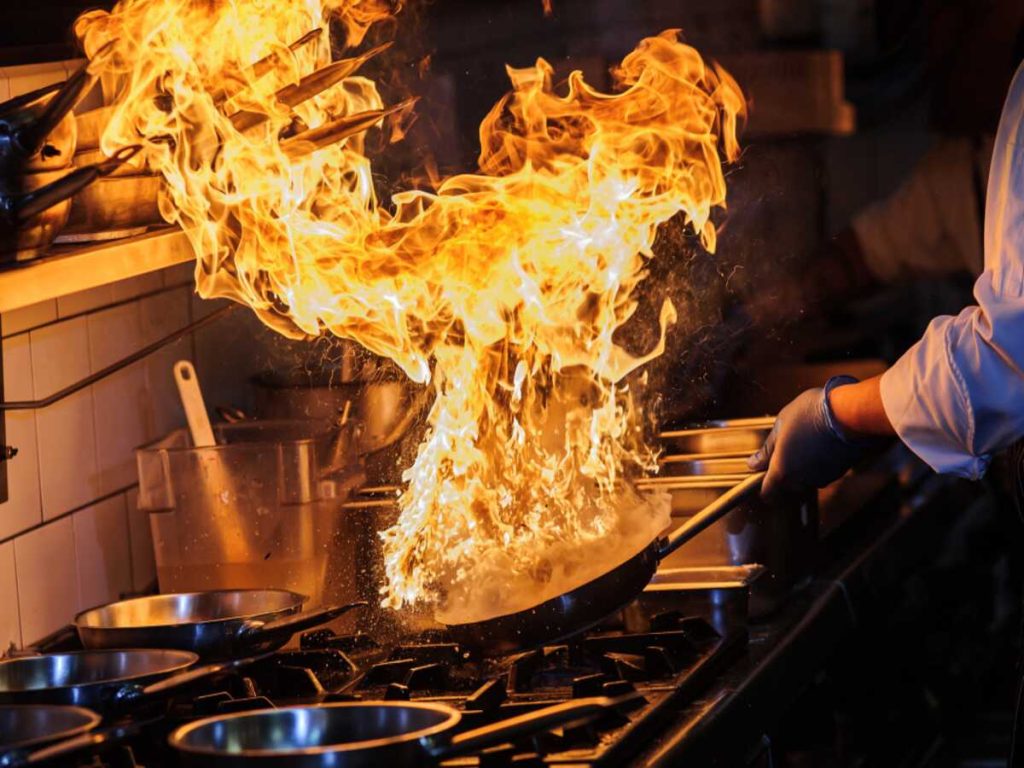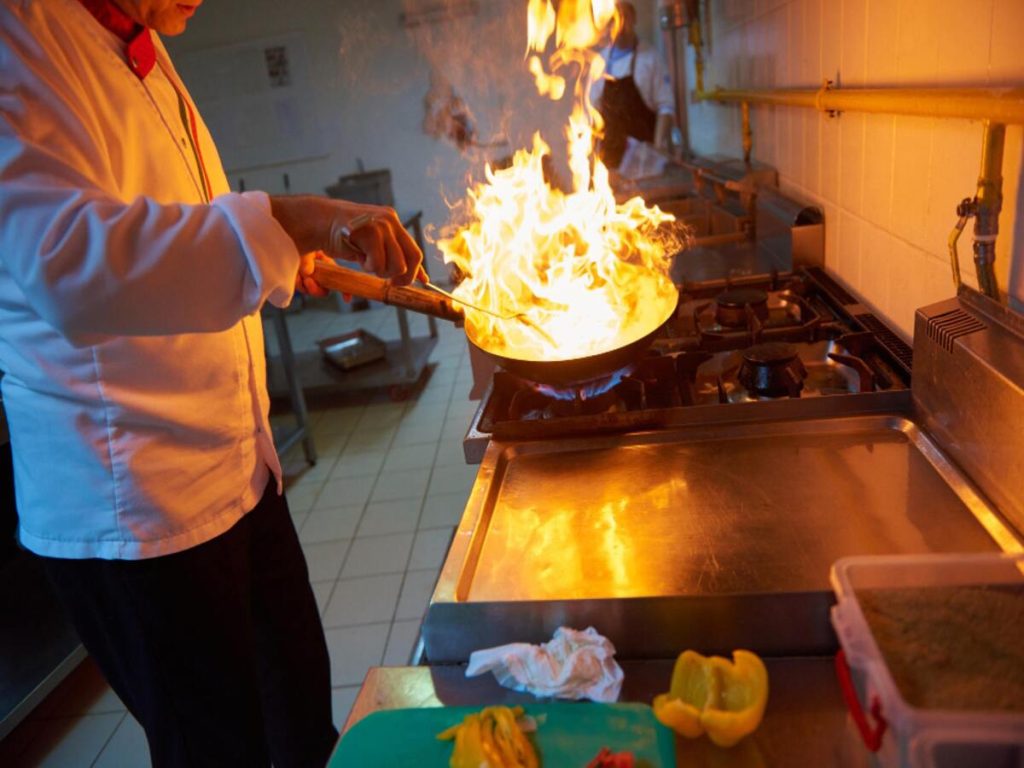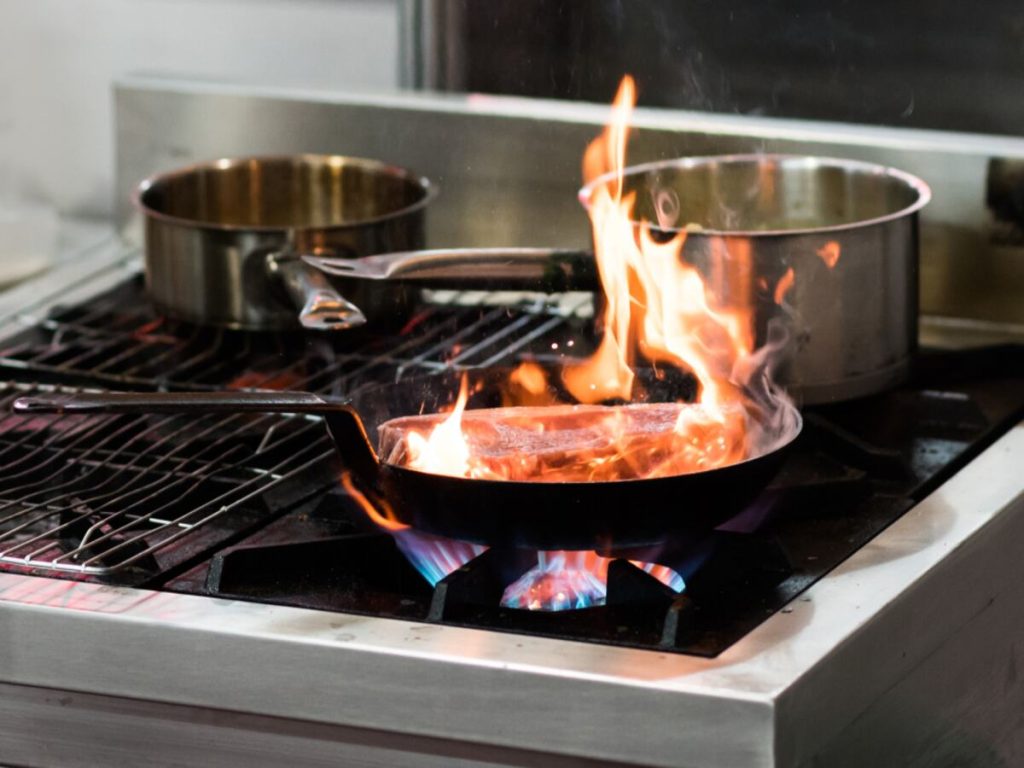8 Tips for Enhancing Restaurant Fire Safety in Malaysia
The culinary world in Malaysia is vibrant and diverse. It offers a wide range of flavours and styles to suit different tastes. The Malaysian restaurant industry caters to all tastes, from street food stalls to high-end dining. Amid sizzling pans, aromatic spices, and busy kitchens, every restaurant owner and manager must know a hidden danger – fire risk.
Restaurant fire safety is of utmost importance. Kitchens run hot, use open flames, and handle flammable materials daily. This constant activity raises the risk of fires like electrical fires. Let’s explore how to enhance restaurant fire safety in Malaysia. We’ll provide a complete guide to safeguard your restaurant, employees, and customers.
Your customer’s safety and the survival of your business are our top priorities in these recommendations. Whether you’re an experienced restaurateur or a new entrepreneur, come with us to uncover the secrets to a safer restaurant experience in Malaysia’s lively culinary world.
Adhere to Fire Safety Checklists
An essential aspect of restaurant fire safety in Malaysia is following comprehensive fire safety checklists. These checklists are your guide to ensure a safe environment in your restaurant. Here’s an in-depth look at why they are so vital:
Prevention of Fire Hazards |
Fire safety checklists identify and address potential fire hazards in your restaurant. Hazards range from faulty electrical equipment to improper storage of flammable materials. By following the checklist, you can fix these issues before they pose a significant risk. |
Employee Accountability |
By training your staff to follow the checklist, you involve them in maintaining a safe environment. This training raises their awareness of their role in fire safety and stresses the importance of preventing potential fire risks. |
Preparedness |
Adhering to fire safety checklists is not about prevention; it’s also about preparedness. By following these checklists, your restaurant staff becomes well-versed in the procedures to follow in a fire emergency, ensuring a swift and effective response. |
Implement Measures to Prevent Grease Buildup
Preventing grease buildup in your restaurant’s kitchen is a top priority for fire safety.
Regular Cleaning and Maintenance |
Establish a strict cleaning schedule for your kitchen staff. This should include daily, weekly, and monthly cleaning tasks. clean and degrease cooking equipment, exhaust hoods, ducts, and filters. Grease tends to accumulate in these areas, and when it becomes thick, it can ignite. By keeping these surfaces clean, you reduce the risk of fire. |
Deep Cleaning Services |
While routine cleaning is essential, consider employing professional deep cleaning services periodically. Professional services use special equipment and cleaners to remove tough grease and grime from tricky spots, guaranteeing a thorough, deep clean. Deep cleaning can prevent the long-term buildup of flammable materials in your kitchen. |
Use Grease Traps |
Install and maintain grease traps in your restaurant’s plumbing system. Grease traps intercept grease before it reaches the wastewater system. This prevents grease from building up in pipes and drains. Regularly clean and empty grease traps to ensure they function effectively. |
Proper Waste Disposal |
Dispose of kitchen waste, including used cooking oil, in a safe and eco-friendly manner. Dispose of items contaminated with grease in designated containers to prevent them from ending up in regular trash bins, which could create a fire hazard. |
Hire Certified Kitchen Exhaust Cleaners |
Consider hiring certified professionals specialising in kitchen exhaust system cleaning. These experts have the knowledge and tools to clean and maintain your exhaust system, reducing the risk of grease-related fires. |
Install Fire Suppression Systems
When safeguarding your restaurant against the ever-present risk of kitchen fires, one of the most effective steps is to install reliable fire suppression systems. These systems are tailor-made for restaurant kitchens and are designed to extinguish grease fires and other emergencies. Here’s a detailed look at this crucial fire safety measure:
Types of Fire Suppression Systems |
Several fire suppression systems are available, such as wet chemical and dry chemical systems. Wet chemical systems are the primary choice in restaurant kitchens, crafted to tackle the specific challenges of cooking oil and fat fires. They work by reacting with the hot grease to suppress the flames. |
Professional Installation |
It’s crucial to have your fire suppression system installed by certified technicians. These experts are trained to place and calibrate the system for the greatest fire protection. |
Regular Maintenance and Inspections |
After installation, your fire suppression system needs regular maintenance and inspections to ensure it works in an emergency. Schedule routine checks and maintenance visits to replace worn-out parts and ensure everything functions. |
Integration with Other Safety Measures |
A fire suppression system is a critical component of your fire safety strategy. Integrate it with other safety measures like fire extinguishers and employee training for complete protection against kitchen fires. |
Emergency Shutdown |
Ensure your fire suppression system has an emergency shutdown feature that can reduce the fuel source (such as gas and electrical power) to kitchen appliances. This helps prevent the spread of a fire and keeps your staff safe in an emergency. |
Provide Fire Safety Training for Employees
Ensuring your restaurant staff is well-prepared to respond to fire emergencies is vital for fire safety.
Basic Fire Safety Education |
Begin by imparting fundamental fire safety knowledge. Teach your employees how fires start, what causes kitchen fires, and why early detection and prevention are crucial. |
Emergency Response Protocols |
Outline clear protocols for responding to a fire emergency. Ensure that all employees know when to call for help, how to alert others, and the importance of remaining calm during a crisis. |
Evacuation Procedures |
Train your staff on the restaurant’s evacuation plan. They should know the escape routes, assembly points, and how to assist customers during an evacuation. Conduct regular fire drills to practise these procedures. |
First Aid Training |
Equip your employees with basic first aid skills, such as treating minor burns or injuries. This knowledge can be invaluable in the event of a fire. |
Identification of Fire Hazards |
Encourage your staff to identify potential fire hazards, such as frayed electrical cords, malfunctioning equipment, or grease buildup. Create a reporting system for them to alert management to any safety concerns. |
Certifications |
Consider offering certifications or awards for employees who excel in fire safety training or fire risk assessment. This can incentivize them to actively participate in safety programs and take their roles seriously. |
Language and Cultural Considerations |
In Malaysia, where the workforce may include individuals from various linguistic and cultural backgrounds, ensure that training materials are accessible and comprehensible to all. Language barriers should not hinder effective safety training. |
Documentation |
Maintain records of all training sessions and certifications. This documentation can be essential for demonstrating compliance with safety regulations and ensuring your staff is adequately trained. |
Prepare a Restaurant Fire Evacuation Plan
Creating a comprehensive fire evacuation plan for your restaurant is an essential aspect of fire safety. This plan ensures that in the event of a fire, everyone in your establishment, from staff to customers, knows how to stay safe.
Map Out Escape Routes |
Begin by mapping out primary and secondary escape routes. These routes should be marked and easily accessible from all areas of your restaurant. Consider designating an assembly point outside where everyone should gather to ensure accountability. |
Emergency Response Protocols |
Display a list of emergency contact numbers near phones and in high-visibility areas. This should include local emergency services, the nearest hospital, and contact information for key personnel within your restaurant. |
Employee Roles and Responsibilities |
Assign specific roles to your employees during a fire emergency. Clearly define who guides customers to safety, who will ensure all kitchen equipment is turned off, and who will perform a headcount at the assembly point. |
Communication Systems |
Ensure you have a reliable means of communication during an emergency, such as a public address system or walkie-talkies. This will enable you to convey important instructions to your staff and customers. |
Guest Awareness |
Educate your customers about your fire evacuation plan. You can do this by placing informational signage in key areas and including a brief overview in your restaurant’s menu or website. |
Regular Plan Review |
Periodically review and update your evacuation plan to accommodate changes in your restaurant layout, staff, or emergency contact information. Staying current is crucial for an effective response during a fire emergency. |
Emergency Equipment |
Ensure your restaurant has fire safety tools like fire extinguishers and first-aid kits. Train your staff on their use and ensure they are easily accessible throughout the restaurant. |
Educate on Class K Fire Awareness
In a restaurant kitchen, Class K fires are a specific type of fire hazard that deserves special attention. These fires involve cooking oils and fats and can escalate if not managed. Educating your staff about Class K fire awareness is crucial for fire prevention and effective response.
Understanding Class K Fires |
Start by educating your kitchen staff on what Class K fires are and their unique characteristics. Class K fires involve flammable cooking oils and fats that can ignite at low temperatures. Make sure your staff can identify the signs of a Class K fire. |
Preventing Class K Fires |
Train your kitchen staff on proactive measures to prevent Class K fires. This includes proper temperature control when cooking with oils, avoiding overfilling cooking pots and pans, and being cautious with deep fryers. Encourage the use of lids to smother small oil fires and the immediate shut-off of heat sources. |
Safe Evacuation Procedures |
During a Class K fire, your staff should know safe evacuation procedures. If the fire becomes uncontrollable, employees should know when and how to evacuate the kitchen and the restaurant to ensure safety. |
Clear Communication |
Establish a clear communication protocol in your kitchen to report and respond to Class K fire incidents. A swift and coordinated response can make a significant difference in minimising the damage and risk associated with these fires. |
Record Keeping |
Maintain records of Class K fire training and drills, which can document your commitment to safety and compliance with fire safety regulations. |
Use Kitchen Fire Extinguishers
In a kitchen fire, having the right fire extinguishers on hand and knowing how to use them can mean the difference between a minor incident and a catastrophic disaster.
Select the Right Extinguishers |
Different types of fires need different types of extinguishers. In a restaurant kitchen, where cooking oils and fats are prevalent, Class K fire extinguishers are essential. These are specifically designed to combat grease fire. Ensure you have them readily available and that your staff knows where they are located. |
Proper Training |
Provide thorough training for your kitchen staff on how to use fire extinguishers effectively. Ensure they understand the proper technique, which typically involves the PASS method (Pull the pin, Aim at the base of the fire, Squeeze the handle, and Sweep from side to side). Regular training sessions and drills are crucial to ensure your staff is prepared to respond to a fire emergency. |
Check Extinguisher Readiness |
Regularly inspect your fire extinguishers to confirm they are in working order. Ensure that the pressure gauge is within the green zone, the pin is intact, and there are no visible signs of damage or tampering. Replace or recharge any extinguishers that show signs of wear or use. |
Placement and Accessibility |
Position the portable fire extinguishers and fire alarm system in strategic locations throughout your kitchen, making sure they are easily accessible in case of an emergency. Mount them on walls or near exits and high-risk areas, such as cooking stations. |
Supplement with Other Safety Measures |
While fire extinguishers are a vital tool, they should be part of a broader restaurant fire safety tips that includes automatic fire suppression system and an evacuation plan. Each component complements the others to create a comprehensive safety net in the event of a fire. |
Regulations Compliance |
Make sure that your choice of fire extinguisher and their placement follow local fire safety regulations. Review these regulations to stay current with any updates or changes affecting your restaurant’s safety protocols.
|
Install Wet Chemical Suppression Systems
When it comes to restaurant fire safety, one of the most effective measures you can take is to install wet chemical suppression systems in your kitchen. These systems are designed to combat Class K fires, common in restaurant kitchens due to cooking oils and fats.
Minimizing Fire Damage |
Installing a wet chemical suppression system is an investment in minimizing fire damage. In a fire, these systems respond, containing the flames and preventing them from spreading to other areas of your restaurant. This swift response can make the difference between a minor kitchen incident and a full-blown disaster, safeguarding both your property and the safety of your employees and patrons. |
Compliant with Safety Regulations |
Regulatory bodies and fire safety standards in Malaysia need restaurants to have appropriate fire safety measures in place. Installing a wet chemical suppression system demonstrates your commitment to complying with these regulations. This not only keeps your establishment compliant but also gives your customers and employees peace of mind, knowing that their safety is a top priority for your restaurant. |
Conclusion
In the busy restaurant industry, keeping everyone safe is crucial. You’re not meeting the law; you’re doing what’s right. By following the eight tips below, you’ll make your Malaysian restaurant safer and less prone to kitchen fires, creating a secure dining experience for everyone.
Yet, the journey to comprehensive restaurant fire safety doesn’t have to be a solitary one. To take your fire safety to the next level, consider partnering with experts like VIC Engineering. With their expertise in restaurant fires safety, they can help your establishment have the best safety systems.
VIC Engineering can offer custom solutions like a customised fire sprinkler system to meet your specific needs, ensuring the safety of your restaurant, customers, and staff from the destructive effects of fires.
Don’t wait until it’s too late. Improve your restaurant’s fire safety with VIC Engineering. Contact them today to discuss your needs and get professional guidance and support. Be proactive in securing your business’s future.
Contact VIC Engineering today and take the first step towards enhancing your restaurant’s fire safety. Ensure your establishment’s safety, safeguard your customers and staff, and secure your business’s future. Visit or call to learn more about their comprehensive restaurant fire safety planning services. Your restaurant’s safety is their priority.

